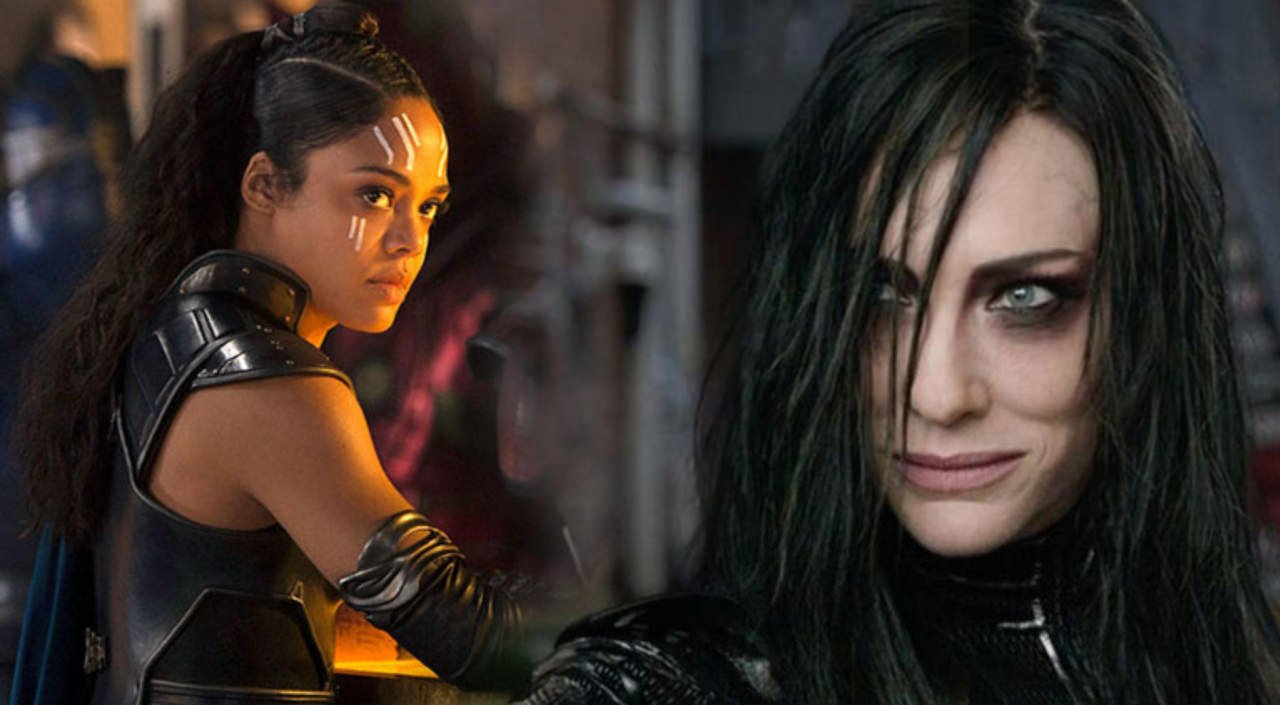Warning: Spoilers!
New Zealand based director, Taika Waititi is the man behind the much anticipated third Thor film in the Marvel Cinematic Universe (MCU). The film is a breath of fresh air and perhaps the cleverest, most enjoyable and outrageously funny film in the entire trilogy. Although, one may have to watch the previous films Thor, Thor: The Dark World and Avengers: Age of Ultron to understand some part of the plot. But otherwise, it is a film that can be appreciated for the mere entertainment which it whole-heartedly provides.

Director Taika Waititi
Image credit: Medium
Waititi allows Thor to abandon his previous demeanour of the calm and composed charmer to adopt a fresh attitude as the God of Thunder with a great sense of humour. Hemsworth’s character is newly multidimensional, and we as an audience are forced to laugh at his jokes so that we may admire his solemness in the climax. The protagonist is also made to fight his “friend from work” the Hulk, after receiving a haircut from Stan Lee. This is a film that will not let an opportunity for a joke slide. This is a film where Loki is overtly likeable but quickly outwitted by Dr. Strange (Benedict Cumberbatch). This is also a film where Jane’s absence is quickly noted and then soon discarded.
The plot follows the two brothers stuck in an interspace wasteland (Sakaar) after their father’s death which unleashed their estranged elder sister’s existence. She, the Goddess of Death, was at the party way before the boys but was banished by their father for having diabolical ambitions. A prophecy called Ragnarok (the destruction and end of Asgaard) will be fulfilled if she isn’t stopped in time.
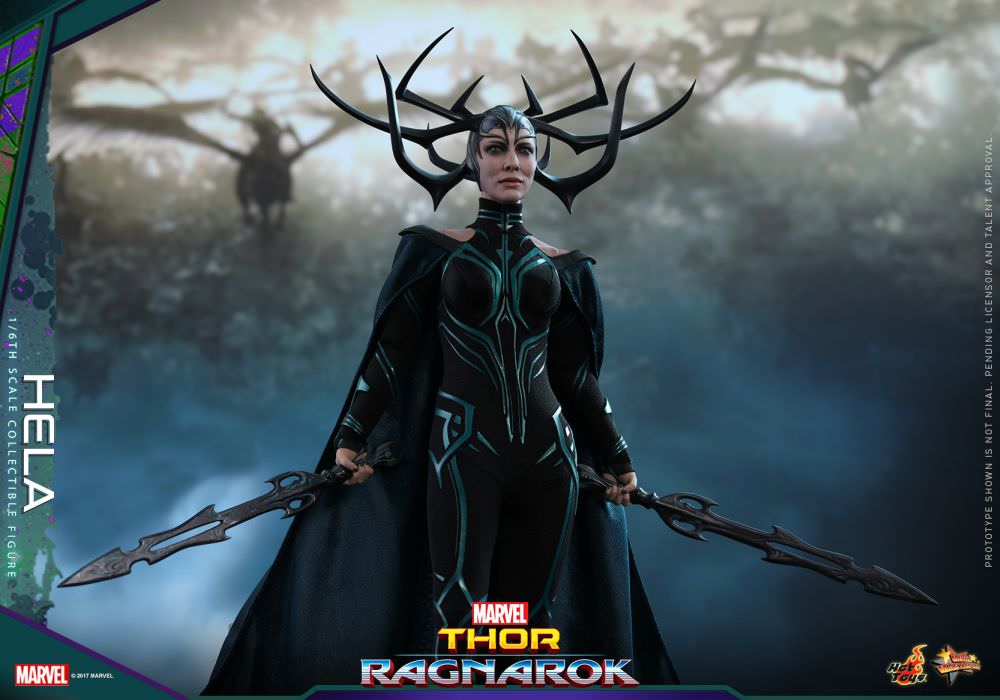
Hela, played by the mesmerising Cate Blanchett, is an immensely powerful and worthy opponent (she did kind of crush Mjolnir into little pieces). Blanchett’s appearance is quite heinous with disturbing black locks, which disappear every time she switches to battle mode and are replaced with a magnificent crown of horns. She isn’t the multidimensional antagonist we expect but definitely puts the fear of death in us when required.
The supporting female character, Valkyrie, is an addition to the “Revengers” (Thor suggests this widely vetoed group name) as she decides to help them face Hela. She is an elegantly stoic character with a drinking problem. Valkyrie was part of an elite force of female warriors sworn to protect the throne of Asgard. She lives in Sakaar after experiencing the horrific affects of fighting Hela and watching her fellow warriors perish.
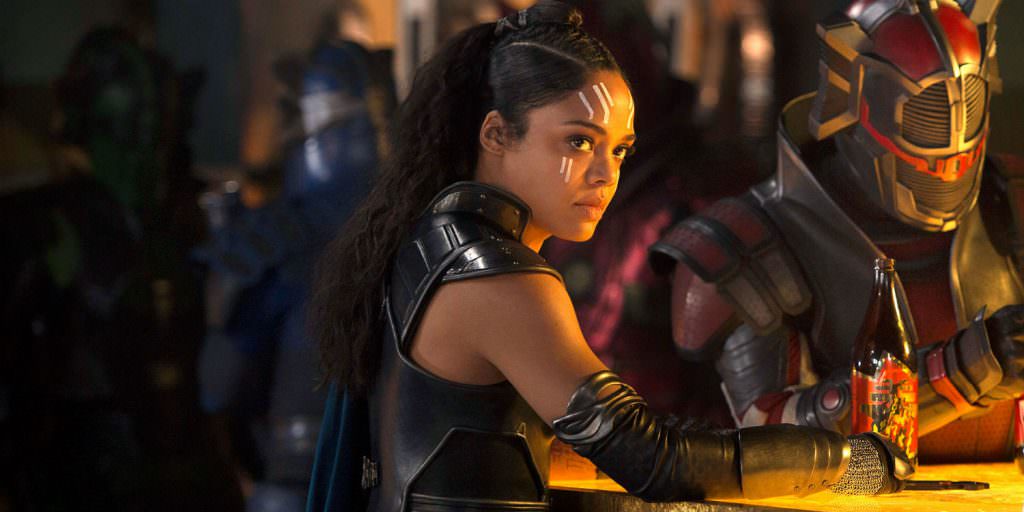
Valkyrie in Sakaar
Image credit: Hercampus
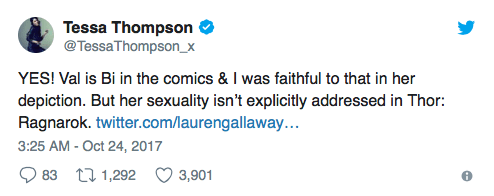
What Thompson tweeted about her character. Image credits: Twitter
“Proud to have it, ashamed of how he got it.”
When Hela uttered these words about Odin’s rise to dominance, I froze in my seat. This sentence, spoken as she destroyed the veneer of Asgard and shattered its image of itself, was so much truth.
“The acceptance and denial of this violence is the foundation upon which we stand today. The lover’s embrace of white supremacy at all costs — specifically the embrace of white, male, cisgender, heterosexual, able-bodied whiteness — remains our modus operandi. White people in America are comfortable with violence because their violence maintains their power.” – Talynn Kel in The Establishment
The film evokes only emotions of pure awe and amazement at the capabilities and qualities of both female characters. The film means business and does not entertain the possibility of romance as a distraction. All the characters have clear motivations and perform accordingly. In the climax scenes where the people of Asgard are made to evacuate, many female citizens are shown wielding swords among other weapons and not just holding babies.
I also wondered if the film passes the Bechdel test but there is literally a scene where two named women talk to the man sitting between them and not to each other. Another named character talks to other women but they don’t reply/converse.
The multi-talented director lends his body to structure the body of Surtur (a defeated villain, who incidentally also brings about Ragnarok). He also voices the character of Korg, the hilarious alien made of rocks. With an adorable Australian accent he wins hearts and provides much laughs.
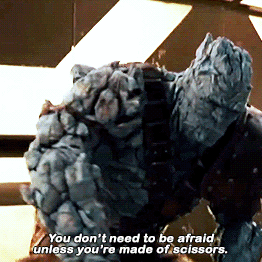
Korg introducing himself
Image credit: Gram Union
The visuals in the film are thrilling, paired with excellent editing and a carefully planned colour palette. The fight scenes between the gods keep us mortals at the edge of our seats. The film attempts to stand out from the rest of the films in the MCU by better representation of its female characters. In conclusion, the film ‘Hela’ good.

Image credit: Gfycat
Also read: Wonder Woman And The Refreshing Absence Of The Male Gaze
Featured image credit: Comicbook.com
About the author(s)
Journalism student by day, insomniac (induced by the amount of knowledge in this world) by night.
